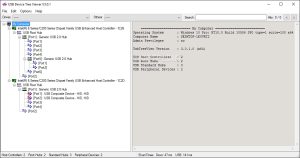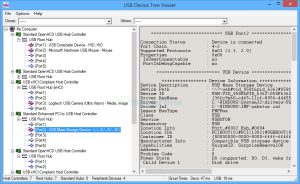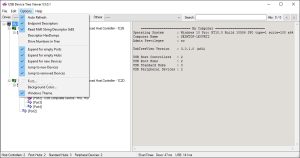USB Device Tree Viewer Diagnose USB Issues on Windows Free Tool
Overview:
USB Device Tree Viewer is a free utility for Windows that can visually represent every USB device and hub that is not only connected but also operational. The utility shows the elaborate expanding hierarchical tree that one would find deep within your USB host controllers, ports and devices, providing a dense and meaningful view of the entirety of the USB ecology, which gives users much more insight than any predominate device manager, which makes it an important utility to diagnose any connection issues and think through the hardware layout of your system.

Why Use It?
Use this tool to easily troubleshoot USB issues such as unresponsive devices, unrecognized devices or issues with physical ports. The tool identifies what physical port a device is using, identifies hidden hubs, and provides specific technical information for troubleshooters. It is a powerful tool for developers debugging USB hardware, or anyone interested in understanding why a device is not functioning properly on their system.

Key Features:
- Displays the physical USB device tree and connection topology.
- Displays detailed device information (Vendor ID, Product ID, Speed, Power State, etc).
- Identifies all USB hubs that are connect as well as composite devices.
- Provides the exact physical port for a device.
- The program provides live updates as devices are plugged in or unplugg.
- The program provides detail information about devices compare to what is shown in Windows Device Manager.
- The program is a simple executable that does not need to be install.
How to Use:
- Download the usbtreeview.exe file.
- Double click to run program (no install required).
- The entire USB tree structure will load automatically.
- Click on any device or hub to view its properties in detail.

System Requirements:
- OS: Windows 10, 8, 7, Vista, XP, or Windows Server 2008/2003
- RAM: 512 MB
- Hard Drive: 50 MB.
How to Download and Install?
- Click on download for your OS (windows, mac, or linux)
- Run the installer that you downloaded.
- Follow the instructions on the screen to install.
- Open USB Device Tree Viewer and enjoy.



